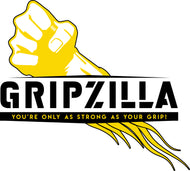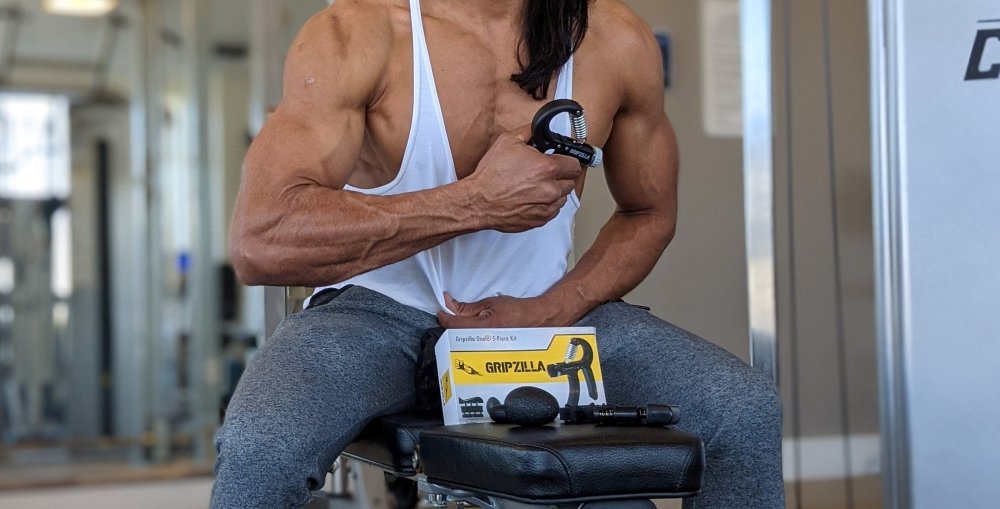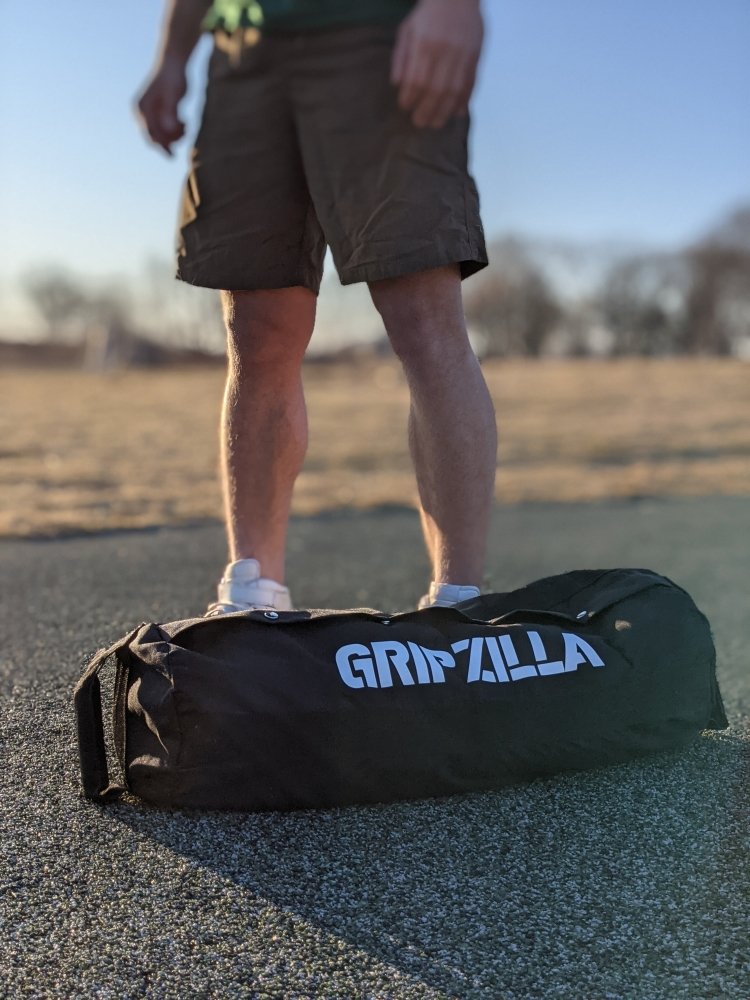How to Determine the Best Grip Strengthener for Your Needs
Types of Grip Strengtheners
The strengtheners in this test fall into a few basic categories, which we call coil, spring, and articulated.
Coil strengtheners are made around a coil of metal (in this case, aluminum alloy). The gripping motion contracts the coil, which returns to its original position on the negative of each rep. The Gripzilla Ultimatum kit falls into this category.
Spring-based strengtheners have handles separated by a hinge and bound by a spring. The tension and length of the spring dictate the difficulty of the squeeze. The Gripzilla One® kit contains the adjustable gripper which is an example of a spring-based strengthener.
Finally, articulated strengtheners enable each finger to be squeezed individually. They’re constructed around a series of springs, which separate the contact patches from a central platform. This Hand and Gripper Exerciser series is the most popular line of articulated grip strengtheners.
As a side note, all these grip strengtheners train what GRIPZILLA calls crush strength or the grip between your fingers and your palm. Climbers seeing to train pinch strength will need different exercises, and grip endurance needs a different approach.
For crush strength, however, picking a grip strengthener comes down to a few essential priorities.
Do You Need to Train Individual Fingers?
This question is down to what you need your grip for. If you’re a lifter or desire a firm handshake and a stable hold on that barbell or pull up bar, it’s acceptable (and even preferable) to train the grip all at once. After all, that’s how you’ll be applying it. These trainees ought to look at coil and spring strengtheners.
Climbers, guitarists, and pianists may require a more targeted approach. These disciplines call for agility and strength in each finger — many climbing holds only have room for a finger or two. Trainees looking to assess individual fingers should look into articulated strengtheners.
Fixed vs. Adjustable

Fixed-tension grip strengtheners are set at a particular resistance level. Once you outgrow one, you’ll have to buy a new device to advance. Gripzilla Ultimatum offers strengtheners in various tension levels. So it will set you straight for a while. Starting at 50lbs resistance where anybody can grip it and going all the way up to 300lbs where only a few big guys in your gym are able to crush it.
If you’re earnest about grip training, the static strengtheners are the more efficient and well-built group. They have fewer moving parts and are built to last — just be prepared for the cost.
Adjustable grip strengtheners may do customized for different hands and tightness levels. Gripzilla offers plenty of range, especially at beginner-friendly resistance levels.
If you’re starting, or you’re not sure that you’ll want to invest in multiple devices, an adjustable strengthener is your best bet. The Gripzilla One® 5-Piece Kit and Gripzilla Trinity -3 Piece Kit devices are both adjustable.
Resistance Level
A strengthener that you can’t pull is useless, but one that’s too easy won’t help you progress. For many beginners, a light-to-medium tension will probably be within reach.
Still, you won’t know until you get your hands on one and try. Return for various tension if necessary. If in doubt, you can always buy an adjustable device.
How We Tested


It is was a simple test. There’s only one thing to do with grip strengtheners — squeeze. For the testing period, We recommend to use all five grip trainers to train your grip consistently.
We handed the devices over to a few friends with handshapes of varying sizes to double-check my impressions. They all put in brief workouts with each device to see how ergonomics and efficiency held up across different hand sizes and shapes.
Devices were then scored in three basic categories. Efficiency and usability were the primary score categories, with a modifier for adjustability.
Efficiency
How effectively does the device tax my grip? How often and how quickly do I achieve a quality workout?
Usability
How intuitive is the device to use? How ergonomic is the design? How comfortable am I during workouts?
Adjustability
How much can I control the tension of the device? How much can the device grow with me through my training?



